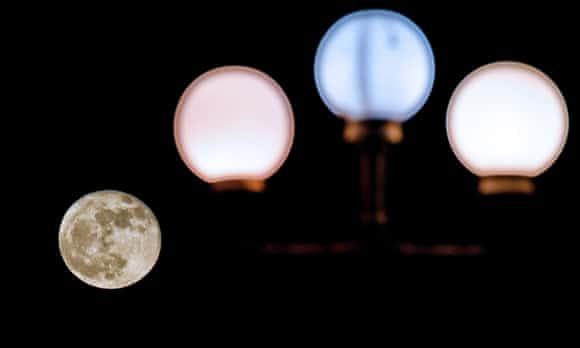 | Lab notes: raise a glass to your ear and hail the dinosaur swan |  |  Reconstruction of Halszkaraptor escuilliei. Scientists, quite rightly, described it as 'very weird'. Photograph: Lukas Panzarin/Andrea Cau
| Tash Reith-Banks
| This week's biggest stories It lived about 71m years ago, had a swan-like neck, razor-sharp "killer claws" and a duck-billed snout and was about the size of a mallard, with a long tail and longer legs. This 'very weird' creature (not my words, that's an actual scientist's description there) is apparently a new species of amphibious dinosaur, discovered in a smuggled fossil from Mongolia. And to toast that exciting news, you'll need a really good glass of champagne - but how will you know whether you've been passed plonk or premier cru? According to researchers, the sound of the bubbles reveals all ... Assuming you've got a bottle of the good stuff to hand, it's worth celebrating two more pleasing pieces of news. Firstly, scientists believe a gene editing breakthrough which uses a modified form of Crispr to boost gene activity could one day be used to overcome currently incurable diseases such as diabetes and muscular dystrophy. And secondly, the British Museum have revealed that 2106 was a record year for treasure finds, with 1,120 discoveries – the highest number since the revised Treasure Act came into law 20 years ago. That means there must a lot of very happy detectorists out there. Cheers! More news from Guardian Science | Sign up to Lab notes ___ Straight from the lab – top picks from our experts on the blog network |  |  A cast of the Berlin Archaeopteryx, from the American Museum of National History. Photograph: Jason Edwards/Getty Images/National Geographic RF
| Have we lost an Archaeopteryx but gained a new species of theropod dinosaur? | Lost Worlds Revisited A paper published earlier this week in BMC Evolutionary biology suggests that one of only 12 known Archaeopteryx fossil skeletons is not in fact an Archaeopteryx at all but a new species of theropod dinosaur, Ostromia crassipes. One Dutch newspaper, perhaps over-egging it slightly, went as far as likening the discovery to finding out that your Monet painting turned out to be a Van Gogh. So what is Archaeopteryx and why has this paper got palaeontologists (a bit) excited? Trump's cuts to national monuments are an assault on our humanity – fight them | The Past and the Curious From a purely domestic point of view, the withdrawal from Unesco is also part of a pattern by the Trump administration to shrink our public lands and restrict our ability to study, protect, and preserve our heritage sites. A little more than ten days after withdrawing from Unesco, the administration proposed a steep fee hike for 17 of the most visited national parks in the American system, with some parks facing entrance fees of $70 (£52). Sure to decrease the number of visitors, this comes on top of a proposed budget decrease of $297m. This is also an undemocratic, classist maneuver to further marginalize poorer Americans and decrease their access to public lands that they deserve to enjoy. Echo chambers are dangerous – we must try to break free of our online bubbles | Notes & Theories
The early days of the internet promised a mind-expanding utopia, where we could freely exchange new ideas and contemplate other points of view. Even in those days of heady optimism, there were already a few academics who worried that this vision pivoted on too high-minded a picture of human nature. In 2017, after a year of revelations involving cyberbullying, troll factories, campaigns of misinformation and more, we should urgently be questioning our use of online space. And to counter these threats we need to examine the greatest one: our own cosy online bubble. Visit the Science blog network _____ Alex Bellos's Monday puzzle |  |  Brain stalled? Get it racing again with one of Alex's fortnightly puzzles! Photograph: Alamy Stock Photo
| Did Alex's logic puzzle drive you round the bend this week, or did you put your brain in top gear and solve it? Visit Alex Bellos's Adventures in Numberland blog for more marvellous maths ___
Science Weekly podcast |  |  Antibiotic resistance is one of the greatest threats we face. Photograph: Greg Wood/AFP
| Nicola Davis explores the origins of antiseptic surgery and asks what we might learn from its founding father, Joseph Lister, about taking on superbugs and other modern healthcare threats. ___ Eye on science – this week's top images |  |  The supermoon as seen in Naples. Photograph: Ciro Fusco/EPA
| Supermoon! Supermooooon! Everyone loves a supermoon, and our readers are no exception, as this gallery of their pictures shows. | | Guardian News & Media Limited - a member of Guardian Media Group PLC. Registered Office: Kings Place, 90 York Way, London, N1 9GU. Registered in England No. 908396 |
| | | |
No comments:
Post a Comment